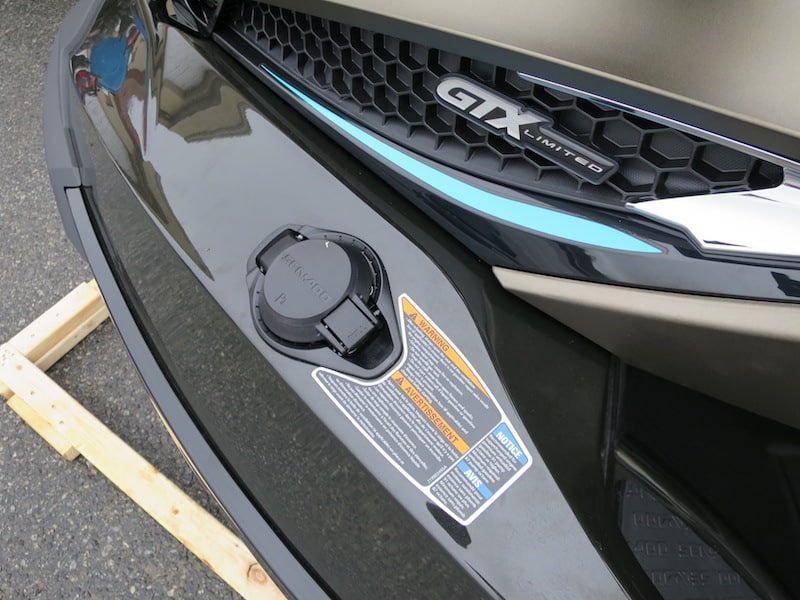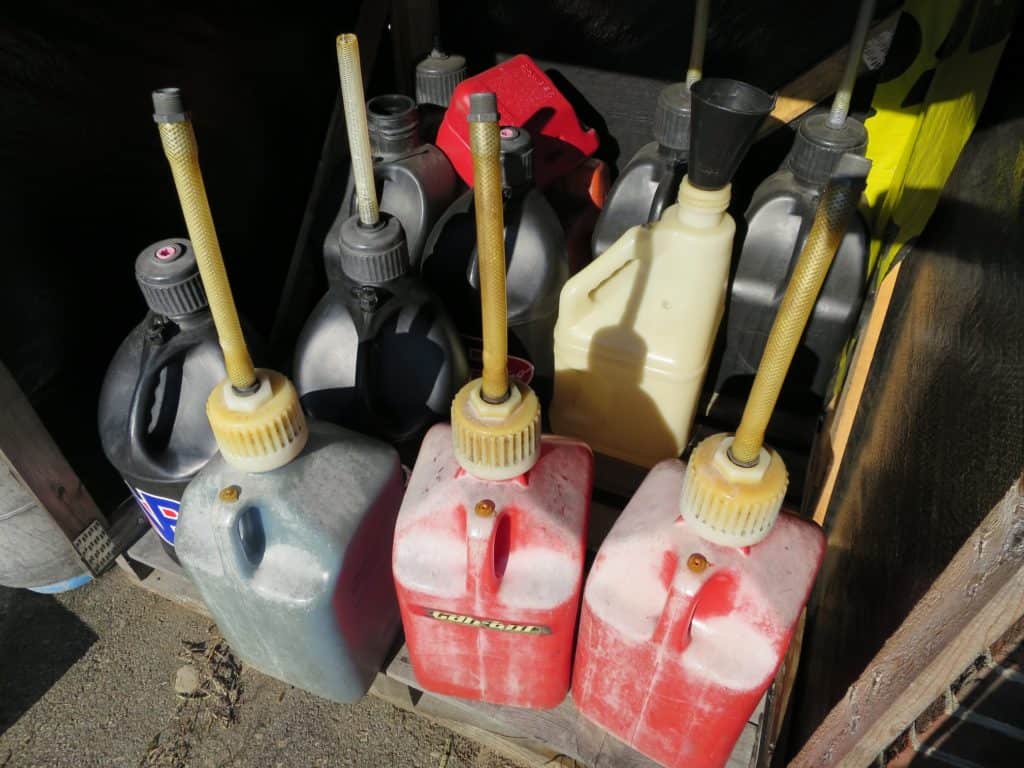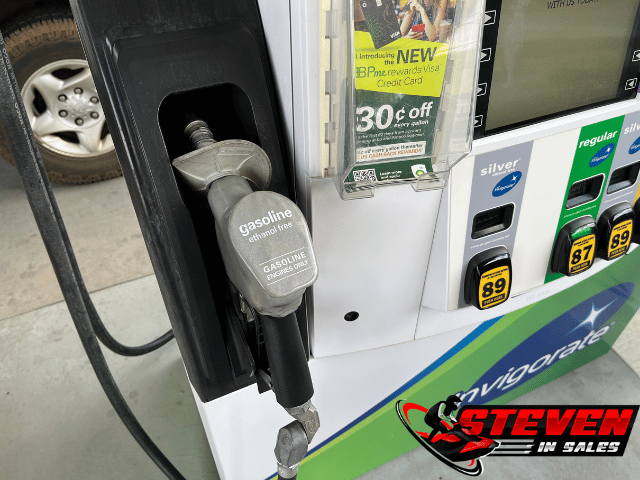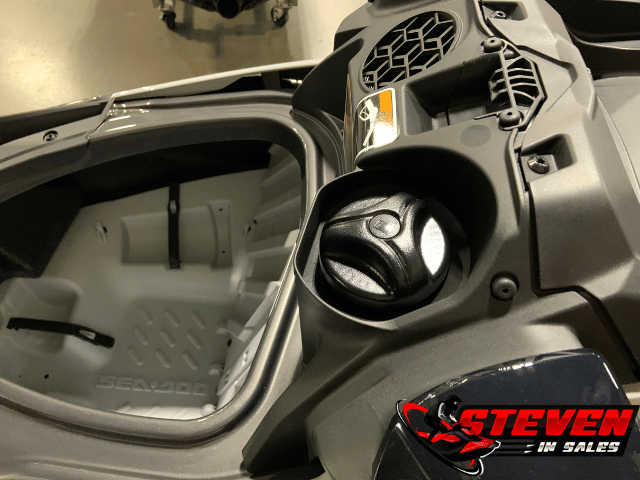Blasting around on the water with a new personal watercraft (PWC) is a thing everyone should experience. While fun, there is a cost to running the machine, and you can only travel so long before you run out.
On average, I find a PWC will travel about 60 to 120 miles before you run out of fuel. Another way to look at it is the average PWC will travel about 2 hours when going full throttle all the time!
What you have, the engine size, supercharger, weight, and riding conditions all affect the range a PWC can travel.
I find some PWCs are more fuel efficient than others, but they also are not the best for long-distance travel. The larger the machine, the better it will be for longer distance, but it’s not always the most fuel efficient.
While one can travel 60 to 120 miles before running out of fuel, most owners get a weekend out of their watercraft. The average rider doesn’t ride non-stop, they take breaks and only ride on the best days. It’s because of this that it’s hard to give exact numbers.
What is MPG and GPH?
It’s more common for boats and PWCs to use gallons per hour (GPH) instead of miles per gallon (MPG) like you see with cars.
The GPH does change depending on the speed you go. When going wide open throttle (WOT) you will use a lot more gas than at cruising speed, that is why GPH values are given at different speeds.
Even with these options, the GPH will vary greatly, as covered in the last section. Use GPH or MPG as a guide and not a definite number to expect, more of a starting point to compare other jet skis to each other.
What Affects Jet Ski MPG?
There are a few things that affect the distance of a PWC. Here is a short, but most common items that affect the range.
- Engine – The bigger the engine, the more fuel it will use! It’s one of the reasons why 3-cylinders are becoming more popular for jet skis.
- Superchargers – The supercharged jet skis will use more fuel than non-supercharged models. It’s not always as bad, but when you start to get into higher RPM ranges, they guzzle fuel a lot more because the engine is working a lot more.
- Weight – The heavier the ski and the more things you carry (along with your weight) the more the thing has to work and thus use more fuel.
- Driving Modes – Many PWCs you get today have different driving modes that help with fuel consumption. One mode from Sea-Doo is the ECO Mode, which limits take off and top speed to give you better gas mileage.
- Water Conditions – The more rough the water, the more gas you’ll burn. The water condition will also affect the distance traveled, it’s harder to push through murky water than clear water.
- Time – Not something people think about, but your engine burns more efficiently the cooler it stays, so riding when it’s hot will affect distance. This could cause some debate over closed vs open loop cooling, but it shouldn’t be that huge.
- Gasoline – The gas type you use will affect its performance. If you have a supercharged model, you should run premium gas. Also, for all jet skis, the more you stay away from ethanol, the better gas mileage you’ll get.
- Elevation – The higher you ride in elevation, the less oxygen your jet ski has to use for combustion. Fuel injected engines will adjust, but you will burn more gas the higher up you are in elevation.
How To Get Better Gas Mileage?
If gas prices are high, or you want to get the most out of your watercraft, there are a few things you should do to maximize your MPG.
- Remove any extra weight – the less weight you carry, the more miles you go.
- Don’t buy gas on the water – The gasoline you buy at the marinas or boat docks will always cost more due to the convenience and how they store it. Try to get gas at local gas stations if cost is an issue.
- Avoid gas with Ethanol – There is less energy in gasoline with ethanol in it, so you don’t travel as far. Add marine fuel stabilizer to help with the ethanol problem, but it’s better to avoid if you can.
- Use slow driving modes – Some jet skis have an “ECO Mode”, which gives you better gas mileage. If your watercraft doesn’t have an ECO Mode, then see if it has a learning mode, touring, default, or some mode that limits take-off power. Some jet skis have a learning key which limits take-off and top speed.
- Avoid choppy and murky water – The more choppy and dirty the water, the more your machine has to work.
- Use cruise control – It’s best to stay at one speed, so cruise control or the speed limiter will help with this to get you better MPG. (Don’t stay at one speed within the break-in period)
The Most common Fuel Tank Sizes?
A jet ski will have a fuel tank size from 5 gallons up to 21 gallons.
The most common fuel tank size is 18 gallons.
The average watercraft uses about 10 gallons at wide open throttle (WOT), which means the average machine does about 1.8 hours at full throttle.
If we take fuel cost at $4 a gallon, that would be $72 to fill up an empty 18 gallon gas tank for an average craft.
The average owner puts about 30 hours a year for their jet ski, so that means we should expect fuel cost will be about $1,200 a year!
What Is The Most Fuel-Efficient Watercraft?
The most fuel efficient jet skis will be the ones with the smaller engines, like the Sea-Doo Spark and Yamaha EX.
The 60HP Sea-Doo Spark base model will do about 2.4 GPH at cruising speeds. You should expect closer to 6 GPH for the bigger engine Spark and Yamaha EX at wide open throttle (WOT).
The worst MPG jet skis are the high horsepower ones, 250 HP or greater, except 22 GPH or more at WOT!
Let’s Cover Gallons Per Hour Usage
The honest truth about jet drive engines is that they do use more fuel than other boats, jet skis included.
Really, any boat uses a lot, it’s the nature of the beast, especially if you want to reach over 20 MPH. I know people like to talk down to jet drive, but the reality is that any boat is going to guzzle gas!!!
As I covered in the last section, the average PWC owner pays about $1,200 a year for fuel. I know a few people who only take the watercraft out twice a year, so it’s much cheaper for them, and a few who are the opposite.
There are other factors to consider when it comes to jet ski ownership and the costs that come with them that I cover here.
When You First Get It Your Jet Ski
When you first get your jet ski, you will find that you’ll use more gas often. When something is new, you’ll play with it more. This is just the nature of getting something cool like a jet ski.
Additionally, you will experience the lowest gas mileage for your new jet ski when the engine is not yet broken in. This is true for nearly all vehicles with engines! Therefore, expect to consume a bit more fuel during the first 10 hours of use. By “a bit more,” I mean an amount that the average person might not even notice.
Carry Extra Fuel?
While you should not carry extra gas inside your jet ski, many models today have add-ons that allow you to carry gas at the rear of your watercraft.
Sea-Doo makes a LINQ Fuel Caddy Kit 4 Gal (Amazon Link Ad) that installs super easy for any model with the LinQ system.
Many fishing rod and coolers attachments have the gas mount systems on them, so you are able to carry extra gas on your jet ski.
What Fuel Should You Run?
Most jet skis run on gasoline, and the type of fuel you buy affects many aspects of your watercraft.
If you have a supercharged watercraft, you need to run premium (91 or 93 octane) gas. High-performance engines are super picky about the fuel that is put in them and will throw a check engine light if it’s not perfect.
There is also ethanol gasoline, and it’s best to avoid it if possible. This is getting much harder these days and 4-stroke watercraft will run on fine gas that has 15% or less ethanol in it, 2-stroke don’t like it and will do damage to fuel lines over time.
What Do You If You Spill Fuel?
It’s a bummer if you spill gasoline on your jet ski as it will damage decals, foam, and other parts of your craft. The worst is when it discolors plastic trim pieces.
If you spill gas, it’s best you don’t try to clean it up too aggressive. Wiping the gas away on a decal will ruin the decal or peel it off. If it’s just a few drips, I let it dry as it evaporates quickly.
If it’s a lot, the solution is dilution! I get the water hose out, close the gas cap, and rinse off the craft. Grabbing a rag and wiping it off does discolor plastic parts and even some gel coats. Gasoline is an aggressive cleaner, and super dangerous, and mixing it with water removes the danger and dilutes it so it doesn’t get worse. Cleaning your jet ski with Dawn dish soap and water will further clean any residue off the machine.
Personal Locator Beacon
If you’re going on a long ride, especially in new areas that most people don’t go, I suggest you get a personal locator beacon.
If you’re lost, hurt or stranded, activate this beacon anywhere in the world and a special emergency response team will come to your rescue. It may cost you for them to respond, but if it’s life or death… it’s worth the cost!
Before You Get A PWC…
Before you get a jet ski, you need to make sure you have the correct gear. I have gathered some of the must-have accessories for jet ski riders here.
Also, it’s important that you wear the correct clothing, too. Here is my guide on what to wear on your watercraft.




Can you use automotive fuel (premium or regular) with the 10% ethanol in it or is it recommended with no ethanol at all? Here in NJ, no Ethanol is non existent. I have not yet purchased a PWC but I am looking.
10% ethanol will be fine, but I recommended sticking to 91 or greater octane especially if you have a supercharged jet ski. You can confirm what gas your jet ski needs by the label that all of them put next to the gas fill. It’s the supercharged jet skis that get super picky about what gas you put into it.
How many miles can you go on a full tank of gas on average?
Depending on the Jet Ski, how hard you ride it, and the water conditions you can see anywhere from 60 miles to 120 miles on a full tank. 2-Strokes can be worse on Gas than a 4-Strokes and how much stuff you carry can affect distance too.
In 2003 I traveled around the entire perimeter of Grand Cayman Island in approximately 4 hours on 1 tank of gas. I used a 2003 Yamaha GTX 4-tec which was a 4 stroke engine. Everyone on the island at the time used 2 stroke engines and they had to refuel at least 2 or 3 times to complete that same journey. So if you’re talking about distance only. 4 strokes are king. Now when I rolled into the harbor my low fuel light had already been on for half an hour and I was going really slow. I didn’t gun it for the entire trip so that was pretty much the extents of the range as I dangerously almost ran out of gas. I had contemplated carrying extra gas with me and trying to reach Cuba once but it dawned at me that that was probably a stupid idea so I didn’t.